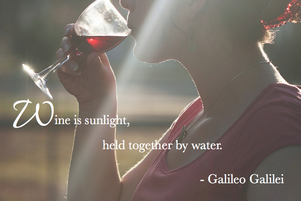
As we move towards spring, we often spring clean our homes, and even our wardrobes. But when was the last time you spring-cleaned your wine rack?
Are you still buying the same wine brands, grape varietals or blends you’ve been buying for year? If so, you may be missing out on the hottest new arrivals that not only deliver great value, but also pack a punch on the palate. Let Purple Teeth help you pick from the latest trends, try something new, and chill out with an altogether hotter glass of wine.

Clear out space on your dusty wine rack. Out with the old and in with the new. Some wine really is worth aging, and will improve in the bottle. But, if you typically spend less than £10 a bottle and buy at the local supermarket, check the labels on your rack. Any Pinot Grigio, Sauvignon Blanc or Rosé that’s lain there or in your fridge for a while will likely be past it’s best if it’s vintage is 2011 or before.
Remember if your wine is from the southern Hemisphere (South Africa/Argentina/New Zealand/Australia) the grapes are harvested around March so that wine is 6 months older than your French equivalent of the same age
The hottest whites will see you through spring and into summer.
- Londoners have been going gaga over Picpoul de Pinet since last summer. (Pronounce it PickPool du PeeNay) It’s a white wine that truly expresses it’s sense of place, and that place is the South of France, by the seaside, near the Thau lagoon. Serve with dish of mussels, and this lip smacking, slightly saline, lemony zinger will be right at home. And because it’s from the Languedoc, home of value when it comes to France, you’ll be able to find decent examples at under a tenner, and it’s got enough weight to serve with your fish and chips. My favourites come from local merchants: winecellarclub.co.uk's Reine Juliette is a perfect example, and Perfect Friday Wine, both under a tenner.
- Groovy Grüvee, or Grüner Veltliner to give it it’s full name, is the Austrian wine that all self-respecting London restaurants have added to their wine lists in the last year or two. Another dry, un-oaked white that balances crisp acidity with juicy citrus fruit, this one is a little more complex with hints of white pepper and the odd floral note along with the grapefruit and lemon. It’s got a lot going on, and will cheerfully accompany your green salad, your seared scallops or keep you company as you sit at the bar alone. It’s not an airhead of a wine. Spend around £12-15 on this grape from the Kamptal or Wachau regions and you’ll discover a new best friend. You can pick this us more cheaply in the supermarkets, but I think it's worth spending a little more at a merchant who knows their stuff to get one that best expresses the grape. Again, there's a great example at WineCellarClub.Co.uk and the one I've listed below, by Domaine Wachau at Amazon is also great if a tad more expensive.
- If you can’t get enough of Marlborough Sauvignon Blanc, you’re not alone. Sauvignon Blanc has been Britain’s biggest selling white varietal for several years. But it seems to me that shipping wine 12000 miles is not the most environmentally friendly option when we’ve got English Bacchus right here on our doorstep. English Sparkling Wine has been getting all the press over the last 2 years, but the dry white wine from the Bacchus grape is the answer to the eco-conscious Sauvignon Blanc drinker’s prayers. It brings you all that gooseberry goodness and makes a lovely aperitif or partner to a dressed crab or crumbly goat cheese just as well. My personal favourite comes from Kent’s Chapel Down vineyard. If you want to stay even more local, there are softer versions available from the Thames Valley’s Brightwell Vineyards, Stanlake Park and Oaken Grove. Wait a month or two till the 2014 vintage is release as it was one of the best years of late. Prices range from about £8-£14 – similar to that of New Zealand’s biggest wine export. If you can't wait, try the one from Perfect Friday Wine from Oaken Grove at Taplow.
- And the hottest red? If you’re looking for value, Spain’s Monastrell (known as Mourvèdre in France or Mataró in Australia) has evolved from is role as the M in a GSM blend (Grenache, Syrah, Mourvedre) to a single varietal that delivers everything from bright juicy fruity flavours in young versions, through to serious oaked gems that delivery leathery, tobacco and spice notes. You'll find great value examples from Yecla and Jumilla. Matching grilled pork, lamb or even charcuterie meats like salami, you won’t destroy it if you chill it. The Spanish do. And because it’s not yet achingly hip – you should be able to bag a decent one for a very reasonable price. The cheapest drinkable example I've found is the Wine Society's Spicy Spanish Red (£5.50) though you do have to pay a one off £40 membership to buy wine from there. Juan Gil is an amazing wine-maker in the Jumilla region and I love his wines, which I've listed below from Amazon. The gold label offers great value and I've drunk the silver label in some lovely restaurants in Spain.
Cheers!
| | |



 RSS Feed
RSS Feed
